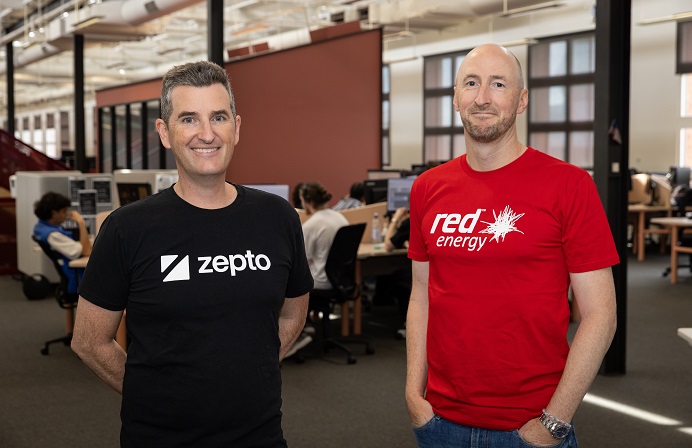
Technology is at the core of the modern banking branch, with free Wi-Fi, tablets and video wall devices to interact with. Tellers sitting behind thick glass walls are being phased out in favour of open-plan space within shopping malls, and a handy excess of staff are replacing the old ticketing approach to customer flow management.
According to David Moville, Citibank Head of Retail, the physical branch remains essential when selling certain products. “The role of the physical branch is very relevant,” Moville says. “It is important to convey to the public that you are physically there. Bank branches and multi-channel tools are very complimentary, with branches more of an acquisition tool and with customers then interacting with the bank through remote channels such as Internet and phone banking.”
Citibank’s new wave of branches feature touch-screen walls and plenty of open space, but they’re not the only ones reinvigorating the retail experience. Other notable Australian branch refreshes include NAB and BankWest, the latter of which has clearly drawn inspiration from the wildly successful Apple stores in offering free Wi-Fi and plenty of experts on hand to engage with customers.
Brian Walker, Head of retail consultancy, The Retail Doctor, has engaged with NAB to help with its retail overhaul. He says Apple is rightfully held up as a paragon of effective retailing, and while banks are on the right track, they have some way to go before the branches will be as effective as a branding exercise as the Apple retail outlets.
Consider the job listing description for an Apple store employee (which Apple terms ‘Specialists’): “As a Specialist, you’re the essence of a customer’s experience at the Apple Retail Store. You enrich people’s lives through meaningful dialogue about the coolest products on earth. You earn trust by recommending solutions that do more than meet people’s needs—they inspire their hopes and dreams. And you thrill customers by consistently finding ways to make their ownership experience better than ever.”
While the aesthetic of the Apple retail store is relatively easy to emulate, Walker says reskilling staff to promote the experience is the challenge the banks are currently working to resolve.“There is a range of things that still need to be improved around the staff retail skills, their selling skills and their people skills,” Walker says. “You used to go to a bank for advice, and banks still will provide that service, but they’re also now trying to sell customers a product, and there are some challenges there in terms of mobilising their people to achieve that.”
Branch sizes have also been shrinking as banks experiment with kiosks and shopping mall outlets in a bid to become more immediately accessible and forward-facing with customers. Integrated properly with the online service offering, the physical branch remains a critical cornerstone of a successful financial services brand, Walker says.
“Banks face a very real challenge – how to make their physical distribution work in a far more productive way, reduce their capital investment, make them far more contemporary, focus on the growth of sales and make them relevant when other channels are pulling customers away from the in-store experience,” he says.
The branch as a retail shopping experience
Singapore’s OCBC is one example of a bank that has been effective in making the transition from a traditional branch to become a retailer. OCBC’s FRANK has proven to be very effective in engaging with the target Gen Y, and it stands as proof that banks are now looking to merchandise their products.
A core part of FRANK is the customised credit cards with over 100 different designs, which are on display at the FRANK branch as you would expect to find products at conventional retailers. These cards tap into the customer’s desire for self expression, and have become a successful product line for OCBC. After commissioning a one-of-a-kind card from designer, :phunk, OCBC sold it for S$1000 four days after releasing it to market.
“We realised that we could have lots and lots of different cards and we wondered, “what if we merchandised like that?” David McQuillen, OCBC Head of Group Customer Experience, says. “As everyone knows, no one merchanises cards. They’re always bought through trifold brochures and customers tick boxes and fill in an application form to get them. The idea of putting them on the wall got killed in meetings 50 times.” Despite the success of the cards program, McQuillen warns that assuming that an “Applefication” of the branch is not going to guarantee success.
“We assume what the customer wants, we then develop it, we launch it, customers use it and have problems and then we start fixing it,” he says. “We call it version 2.0, but what it really should have been is version 1.0. For us, we first worked to understand customer ideas, refine, prototype and test before we launched. It is common sense, but uncommon practice.”
NAB’s approach to its retail refresh also involves free Wi-Fi and gadgets for customers to play with. It even now uses carefully curated scent in select locations to build a positive customer sensory response to walking into a branch. According to Executive General Manager, Vicki Carter, the focus for the team is to understand that all retailers, regardless of product category, compete for the same resource: customer time. NAB is effectively competing with high fashion and restaurants, and needs to offer a competitive experience to what those offer.
“Often customers are doing a few things at once when they are in-store,” Carter says. “They might be doing some transactions, but they also want detailed advice and and we see the store pivoting to that type of use.”
In turn that will allow banks with retail presences outlast their online-only rivals, Carter claimed. “Online banks have surfaced, then shut down and gone out of business, so this is not a future threat,” she says. “I cannot see a time in our market where we will not have stores.”





